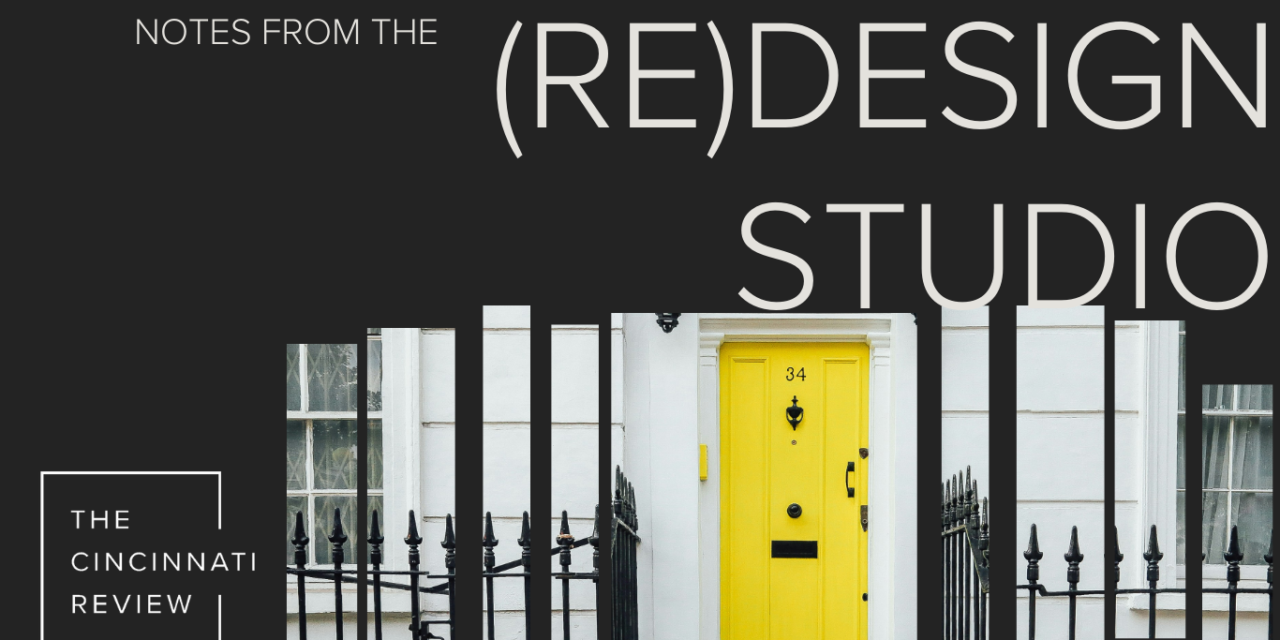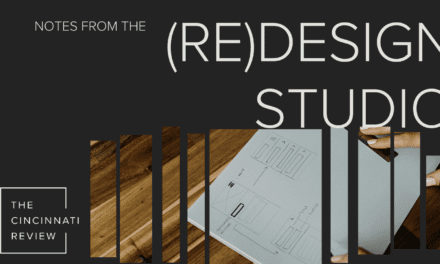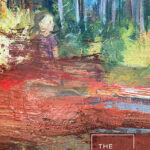3 minutes reading time

This year, The Cincinnati Review is completing a redesign of its website to create a more enjoyable and accessible experience for our readers. This space is where we share that journey with you.
Hello again from the dark cavern of web redesign! We’re deep in the swing of things, now, having, over the summer, completed a series of fascinating interviews with readers about the way they engage with lit journals online. It was such a pleasure to speak in depth with users who spanned a wide range of demographics across lines of age, race, gender and sexual orientation, ability, socioeconomic background, and even devices of choice. I also had the extraordinary opportunity to visit Designmuseum Danmark in the design capital of Copenhagen: an institution that invites its visitors to rethink the ways we engage with ordinary objects and processes. How can we make them better? More sustainable? More hygge? How does our perception of the world change when we simply sit in a different sort of chair?
When you interview people from a diverse range of backgrounds, their needs are all going to be equally diverse—and, yet, one of the pleasures of doing these interviews is finding the commonalities. One commonality that stood out to me is the way many users land on lit journal websites. With few exceptions, they almost never use the front door.
By “front door,” I mean the homepage, of course. Rarely does a reader type “litjournal.com” into their browser and start their reading journey where that journal anticipates them to—and, typically, where that journal front-loads information. Whether it’s via social media or a newsletter link, the majority of users arrive via a single piece that has been shared online. Their next move, as I discussed in my previous post, is often to find out how to submit.
I live in a working-class neighborhood where most people use their side kitchen doors to come and go from their houses. The front door is special: it’s used for guests, on holidays, possibly to greet trick-or-treaters. And it looks different from the side door, which is purely utilitarian. It might have stained glass, a wreath, maybe a sign declaring, “It’s Football Season!” or “Welcome to Our Haunted House.” The front door expresses the personality of the house’s inhabitants.
Knowing that it’s not a main point of entry but, rather, a symbolic space that users might or might or might not stumble upon during their visit, literary journals have an opportunity to use our “front doors” in the same way the folks in my neighborhood do. As long as your site is easily navigable from any landing point, the homepage can simply express your journal’s personality. In marketing terms (to which we in the lit world are often allergic) we’d call this your “brand.”
Good design asks everything to be both functional and aesthetically pleasing, so I’m not arguing that a homepage should be some useless appendage. I am arguing, however, for radical simplification. Too often, lit journal homepages are designed to be the Swiss Army knives of the site, containing links to every single corner of that digital space, a call-to-action to subscribe or submit, maybe throw in a link to the online shop, and—hey! — let’s also sell some space to advertisers here. Not only is this cluttered, it can render the homepage inaccessible to users with disabilities. One or two vital functions on this page allow room for personality here, whatever “personality” means to a journal—whether that’s a fresh wreath or bedazzled football helmet.
Until next time!
P.S. A number of readers reached out to me after the first installation of this column to share ideas, opinions, and questions. I love hearing from you—please feel free to email me at besswinter AT cincinnatireview DOT com.









